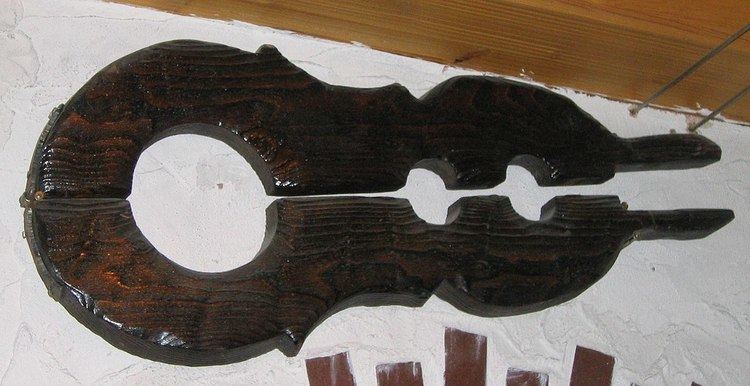 | ||
A shrew's fiddle or neck violin is a variation of the yoke, pillory or rigid irons whereby the wrists are locked in front of the bound person by a hinged board or steel bar. It was originally used in the Middle ages as a way of punishing women who were caught bickering or fighting.
History
The shrew's fiddle was used in medieval Germany and Austria, where it was known as a Halsgeige, meaning "neck viola" or "neck violin". It was originally made out of two pieces of wood fitted with a hinge and a lock at the front. The shrew's fiddle consisted of three holes. One was a large hole for the neck and the other two were smaller holes which fastened the wrists in front of the face.
A bell was sometimes attached to this portable pillory, to alert townspeople that the victim was approaching so that she might be mocked and otherwise humiliated. Another version was a "double fiddle" by which two people could be attached together face-to-face, forcing them to talk to each other. They were not released until the argument had been resolved.
